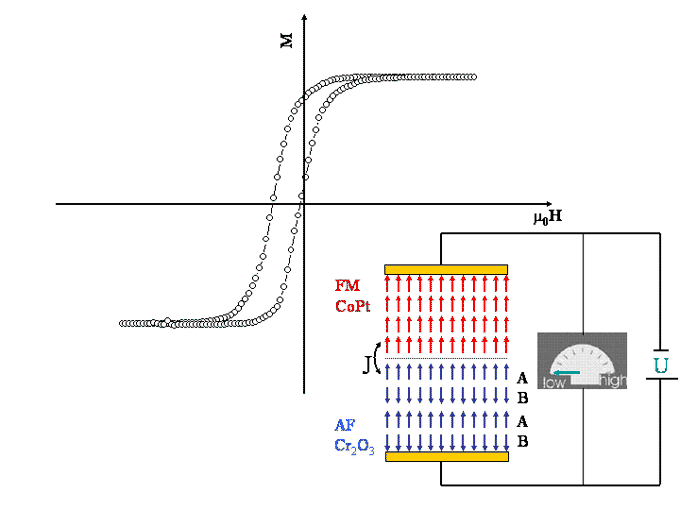Department of Physics and Astronomy: Publications and Other Research

Christian Binek Publications
Document Type
Article
Date of this Version
6-2-2015
Citation
PHYSICAL REVIEW B 91, 214403 (2015). DOI: 10.1103/PhysRevB.91.214403
Abstract
The magnetoelectric antiferromagnet α-Cr2O3 (chromia) is known to possess a roughness insensitive net equilibrium magnetization at the (0001) surface, called boundary magnetization (BM), which is coupled to the bulk antiferromagnetic order parameter. In order to verify whether this symmetry sensitive BM persists in alloys, we investigate the impact of diamagnetic dilution on chromia thin films alloyed with the isostructural α-Al2O3 (alumina). Single-crystalline Cr2−xAlxO3 thin films with (0001) surface orientation and varying stoichiometry have been grown by sputter codeposition in the concentration range between x = 0 and x = 0.6. For these samples, we find the corundum crystal structure, the antiferromagnetic ordering, and the boundary magnetization to be preserved. We also find that the critical temperature TN can be tuned by alloying with α-Al2O3, using the BM as a probe to study the magnetic phase transition. Furthermore, we were able to evaluate the critical exponent and the absolute BM values for different samples. Both properties corroborate that the observed magnetic signals originate from the BM rather than the bulk of the samples.


Comments
Copyright (c) 2015 American Physical Society. Used by permission.